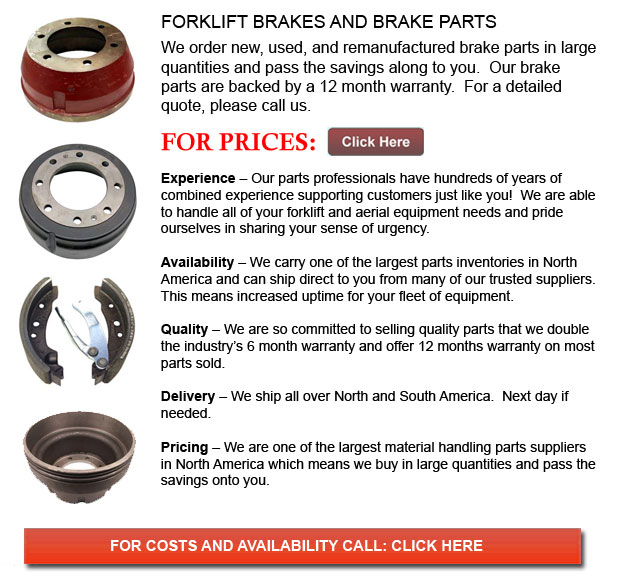
Forklift Brake - A brake wherein the friction is supplied by a set of brake pads or brake shoes that press against a rotating drum unit called a brake drum. There are a few specific differences between brake drum types. A "brake drum" is normally the definition given whenever shoes press on the interior surface of the drum. A "clasp brake" is the term used so as to describe if shoes press against the outside of the drum. Another kind of brake, referred to as a "band brake" utilizes a flexible band or belt to wrap round the outside of the drum. If the drum is pinched in between two shoes, it could be known as a "pinch brake drum." Similar to a standard disc brake, these kinds of brakes are rather uncommon.
Previous to the year 1995, early brake drums needed consistent adjustment periodically in order to compensate for shoe and drum wear. "Low pedal" or long brake pedal travel is the hazardous outcome if adjustments are not executed satisfactorily. The motor vehicle can become hazardous and the brakes could become ineffective whenever low pedal is combined together with brake fade.
There are a variety of Self Adjusting Brake Systems presented, and they can be categorized within two main types, RAI and RAD. RAI systems have built-in tools which avoid the systems to recover whenever the brake is overheating. The most recognized RAI makers are AP, Bendix, Lucas, and Bosch. The most famous RAD systems include Bendix, Ford recovery systems, Volkswagen, VAG and AP.
The self adjusting brake will normally just engage if the forklift is reversing into a stop. This method of stopping is satisfactory for use whereby all wheels use brake drums. Disc brakes are used on the front wheels of vehicles today. By operating only in reverse it is less likely that the brakes would be adjusted while hot and the brake drums are expanded. If adapted while hot, "dragging brakes" can happen, which raises fuel consumption and accelerates wear. A ratchet device which becomes engaged as the hand brake is set is another way the self adjusting brakes could work. This means is just suitable in functions where rear brake drums are used. Whenever the parking or emergency brake actuator lever goes over a particular amount of travel, the ratchet developments an adjuster screw and the brake shoes move toward the drum.
There is a manual adjustment knob situated at the bottom of the drum. It is usually adjusted through a hole on the opposite side of the wheel and this involves getting underneath the forklift with a flathead screwdriver. It is of utmost importance to be able to move the click wheel properly and tweak each and every wheel equally. If uneven adjustment happens, the vehicle could pull to one side during heavy braking. The most efficient way in order to make sure this tedious task is done carefully is to either lift each and every wheel off the ground and hand spin it while measuring how much force it takes and feeling if the shoes are dragging, or give everyeach and every one the same amount of manual clicks and then perform a road test.
![]() Click to Download the pdf
Click to Download the pdf
Forklift Parts
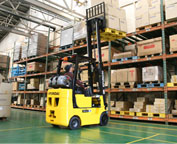
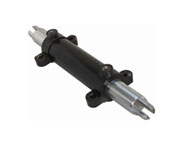
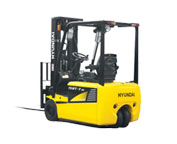
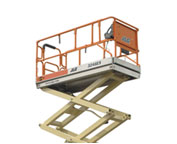
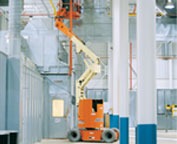
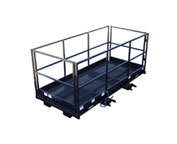
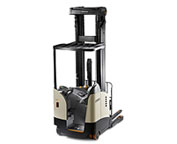
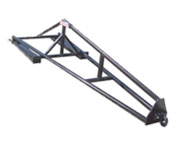
Lift Parts Express
TOLL FREE: 1-888-695-7994
LOCAL: 806-553-4683
2607 WOLFLIN AVE 918
Amarillo, Texas
forkliftpartsamarillo.com
Email Us
About Us


